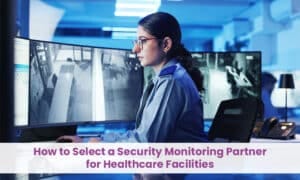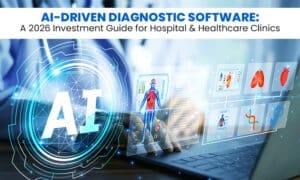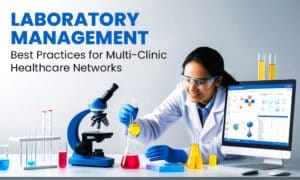
In today’s fast-paced healthcare environment, even the smallest medical mistake can lead to devastating consequences. With lives on the line, healthcare teams must stay vigilant, sharp, and continuously updated. Preventing avoidable medical errors isn’t just a professional responsibility—it’s a moral one. That’s where focused training and AI-powered tools come into play. They not only empower doctors and staff but also improve clinical outcomes across hospitals and clinics. When implemented right, these methods lead to significant medical error reduction, strengthen clinical error prevention, and ensure every action supports patient safety organization standards.
The True Cost of Medical Errors: More Than Just a Mistake
Medical errors remain one of the leading causes of preventable deaths worldwide. According to a study published in the BMJ, medical errors rank as the third leading cause of death in the United States, trailing only behind heart disease and cancer. That’s over 250,000 deaths each year that could have been avoided through effective clinical error prevention strategies.
The consequences extend far beyond mortality. These errors erode trust between patients and providers, severely damage a hospital’s reputation, and often result in costly legal battles. A single mistake can cost a healthcare facility millions in legal fees, settlements, and lost revenue due to reputation damage. In fact, the Institute of Medicine reported that the U.S. healthcare system loses over $17 billion annually1 due to preventable medical errors.
These numbers highlight the urgent need for medical error reduction systems and reinforce the importance of patient safety in healthcare training.
Scale & Seriousness of Medical Errors
| Category | Numerical Value | Explanation |
| Annual Hospital Harm (Preventable) | ~400,000 patients/year | Estimated number of hospitalized patients experiencing preventable harm annually. |
| Preventable Deaths (U.S.) | >200,000 deaths/year | Estimated deaths caused by preventable medical errors each year in the U.S. |
| Cost of Medical Errors | ~$20 billion/year | General estimated cost due to adverse events from medical errors. |
| Hospital-Acquired Infection Costs | $35.7–$45 billion/year | Specific estimate of healthcare cost burden from hospital-acquired infections alone. |
| Rank as Cause of Death (U.S.) | 3rd leading cause | Medical errors rank just behind heart disease and cancer in leading causes of death. |
This table condenses key statistics from the article to highlight the scale and seriousness of medical errors in the U.S. healthcare system. With over 400,000 patients harmed and 200,000+ deaths annually,2 the data underscores why medical errors are considered the third leading cause of death. Moreover, the economic burden—ranging from $20 billion for general errors to as much as $45 billion specifically from infections—demonstrates the urgent need for systemic changes.
The data further supports the importance of adopting preventive strategies, such as better training, enhanced reporting systems, and cross-disciplinary collaboration to improve patient safety.
Why Training is the First Line of Defence?
Proper training forms the backbone of any patient safety organisation. Continuous skill development ensures that doctors, nurses, and technicians stay aligned with the latest protocols and medical advancements.

Simulation-Based Learning
Simulation training offers hands-on practise in a controlled environment. It prepares healthcare teams for real-world emergencies without putting patient lives at risk. Teams who undergo simulation exercises respond faster, make fewer mistakes, and handle high-pressure situations more effectively.
Importance of patient safety in healthcare training becomes evident when medical teams work cohesively through simulated trauma cases or surgical procedures. These simulations improve communication and critical thinking—two essential components of clinical error prevention.
Interdisciplinary Team Training
Team-based care is the new norm in modern healthcare. Training that brings together nurses, physicians, pharmacists, and support staff fosters a culture of communication and collaboration. It reduces chances of miscommunication, medication errors, and care delays. This strategy aligns directly with safety tools and protocols in hospitals to eliminate avoidable risks.
Real-Time Feedback and Mentorship
Continuous evaluation and mentoring provide insights into individual and team performance. When senior professionals provide immediate feedback, junior staff can correct behaviours on the spot. This leads to faster learning and fewer medical errors over time.
AI-Powered Tools That Redefine Patient Safety
Technology is no longer optional in clinical settings—it’s vital. Artificial intelligence (AI) is transforming how hospitals approach medical error reduction. By integrating smart systems and data-driven insights, teams can detect risks before they materialise.
AI-Driven Decision Support Systems
Clinical decision support tools assist healthcare providers during diagnosis and treatment planning. These systems analyse patient data, medical history, and current symptoms to suggest evidence-based treatments. When used effectively, they reduce misdiagnoses and promote clinical error prevention.
According to a report by Health IT Analytics, hospitals using AI-driven tools witnessed a 30% decrease in medication-related errors. That’s a massive leap toward becoming a reliable patient safety organisation.
Predictive Analytics for Risk Assessment
AI can flag high-risk patients based on historical data. These insights help staff prioritise care, administer timely interventions, and avoid complications. Hospitals using predictive analytics align closely with safety tools and protocols in hospitals, creating a safer environment for both patients and staff.
Automated Workflow Management
Administrative oversights can be just as dangerous as clinical ones. Automated tools that track schedules, medication logs, and patient handoffs help reduce delays and omissions. These platforms streamline communication and foster seamless care transitions, reducing the risk of medical errors at every touchpoint.
AI-Powered EHR Systems
Electronic Health Records (EHRs) powered by AI help spot inconsistencies, duplicate entries, or missing information. By ensuring accurate, up-to-date records, these tools play a direct role in medical error reduction and align closely with the importance of patient safety in healthcare training objectives.
Case Studies and Real-World Proof
A study from The Journal of Patient Safety showed that hospitals that implemented AI-based monitoring tools saw a 50% reduction in adverse patient outcomes. Another report published in Health Affairs confirmed that consistent training combined with tech intervention reduced avoidable medical errors by over 40% within two years.
Databases like the National Patient Safety Foundation (NPSF), Agency for Healthcare Research and Quality (AHRQ), and ECRI Institute offer extensive research on the effectiveness of AI tools and clinical training programs. These resources provide real-time evidence supporting the value of integrated safety models in healthcare.
These findings prove how safety tools and protocols in hospitals directly influence outcomes, especially when combined with the importance of patient safety in healthcare training.
Training Minds, Empowering with Tools: The Future of Patient Safety
Preventing avoidable medical errors starts with a commitment—a commitment to excellence, to innovation, and above all, to patient care. By empowering healthcare teams through training and reinforcing their efforts with AI-driven tools, we lay the foundation for a resilient, trusted, and efficient healthcare system.
A strong patient safety organisation doesn’t rely on luck. It builds layers of defence through proactive education and intelligent technology. When hospitals prioritise clinical error prevention and invest in smart solutions, they not only safeguard lives but also protect their integrity, revenue, and legacy.
Remember, the importance of patient safety in healthcare training is no longer optional—it’s a critical strategy for every modern care team. The integration of safety tools and protocols in hospitals ensures that every patient receives accurate, timely, and compassionate care.
Let’s champion a new era in healthcare—where compassion meets precision, and where every life counts.
Sources-





